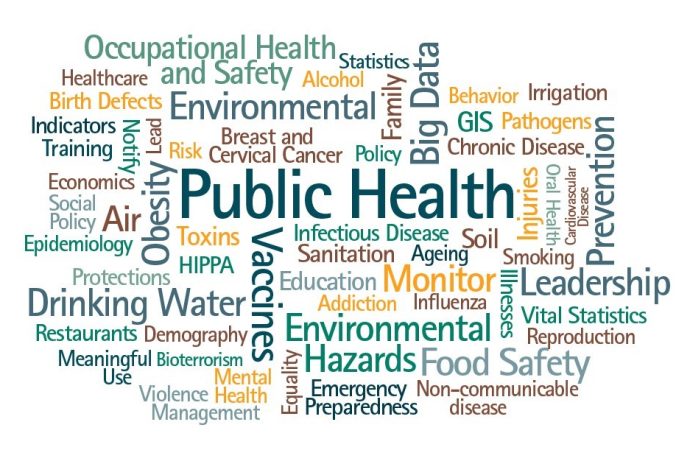As we step into 2024, the landscape of public health continues to evolve, driven by technological advancements, changing demographics, and emerging global challenges. Public health trends are pivotal in shaping policies, guiding research, and informing the public about critical health issues. Here, we delve into the top public health trends for 2024, shedding light on
As we step into 2024, the landscape of public health continues to evolve, driven by technological advancements, changing demographics, and emerging global challenges. Public health trends are pivotal in shaping policies, guiding research, and informing the public about critical health issues. Here, we delve into the top public health trends for 2024, shedding light on the innovations and strategies that are expected to make significant impacts.
Digital Health and Telemedicine
One of the most significant public health trends for 2024 is the continued rise of digital health and telemedicine. The COVID-19 pandemic accelerated the adoption of telehealth services, and this momentum shows no signs of slowing down. Telemedicine offers a convenient, efficient, and often cost-effective way to deliver healthcare services, especially in remote or underserved areas.
Advancements in wearable technology, mobile health apps, and remote monitoring devices are empowering patients to take control of their health. These tools provide real-time data to healthcare providers, enabling more personalized and timely interventions. As digital health technologies become more integrated into healthcare systems, they are expected to improve patient outcomes, reduce healthcare costs, and enhance access to care.
Mental Health Awareness and Support
Mental health has emerged as a critical public health issue, with increasing recognition of its impact on overall well-being. In 2024, there is a growing emphasis on mental health awareness and support. Public health initiatives are focusing on reducing the stigma associated with mental health conditions, promoting early intervention, and expanding access to mental health services.
Workplace mental health programs, school-based interventions, and community support networks are being strengthened to address the mental health needs of diverse populations. Additionally, digital mental health platforms and teletherapy services are making mental health care more accessible and convenient for individuals seeking support.
Climate Change and Health
The intersection of climate change and public health is gaining prominence as a major concern for 2024. Climate change poses significant threats to human health, including increased frequency and severity of extreme weather events, rising temperatures, and the spread of vector-borne diseases.
Public health agencies are prioritizing climate resilience and adaptation strategies to mitigate the health impacts of climate change. This includes developing early warning systems for heatwaves, improving infrastructure to withstand extreme weather, and promoting sustainable practices to reduce carbon emissions. Public health professionals are also advocating for policies that address the root causes of climate change and protect vulnerable populations from its adverse effects.

Picture by: Yandex.com
Health Equity and Social Determinants of Health
Health equity remains a cornerstone of public health efforts in 2024. Addressing social determinants of health—such as income, education, housing, and access to healthcare—is essential for reducing health disparities and achieving equitable health outcomes. Public health initiatives are increasingly focused on understanding and addressing the root causes of health inequities.
Community-based programs, policy changes, and cross-sector collaborations are being implemented to create environments that support health equity. Efforts to improve access to nutritious food, affordable housing, quality education, and healthcare services are critical components of this trend. By addressing social determinants of health, public health professionals aim to create healthier communities and reduce the burden of preventable diseases.
Infectious Disease Preparedness and Response
The COVID-19 pandemic underscored the importance of infectious disease preparedness and response. In 2024, public health agencies are continuing to strengthen their capabilities to detect, prevent, and respond to infectious disease outbreaks. This includes investing in surveillance systems, laboratory capacity, and workforce training.
Global health security is a key priority, with efforts to enhance international collaboration and information sharing. Vaccination campaigns, antimicrobial resistance initiatives, and strategies to combat emerging infectious diseases are critical components of this trend. Public health professionals are also focusing on public education to promote vaccination and preventive measures.
Chronic Disease Prevention and Management
Chronic diseases, such as heart disease, diabetes, and cancer, remain leading causes of morbidity and mortality worldwide. In 2024, public health efforts are intensifying to prevent and manage chronic diseases through lifestyle interventions, early detection, and innovative treatment approaches.
Public health campaigns are promoting healthy behaviors, such as regular physical activity, balanced diets, and smoking cessation. Advances in genomics and personalized medicine are enabling more targeted and effective treatments for chronic diseases. Additionally, integrated care models that coordinate primary care, specialty care, and community resources are improving outcomes for individuals with chronic conditions.
Health Data and Analytics
The use of health data and analytics is revolutionizing public health practice. In 2024, data-driven decision-making is a key trend, with public health agencies leveraging big data, artificial intelligence (AI), and machine learning to inform policies and interventions.
Health data analytics are being used to identify patterns, predict outbreaks, and evaluate the effectiveness of public health programs. Real-time data dashboards and geographic information systems (GIS) are enhancing the ability to monitor and respond to health threats. By harnessing the power of data, public health professionals can make more informed decisions and allocate resources more efficiently.
Global Health and Collaboration
Global health collaboration is essential for addressing transnational health challenges and achieving sustainable development goals. In 2024, public health trends emphasize the importance of international partnerships and cooperation.
Efforts to strengthen global health systems, improve access to essential medicines, and address health inequities are being prioritized. Public health professionals are working together to combat infectious diseases, respond to humanitarian crises, and promote health and well-being worldwide. By fostering global collaboration, the public health community aims to build a healthier and more resilient world.
Aging Population and Geriatric Care
The aging population is a significant demographic trend with profound implications for public health. In 2024, there is a growing focus on geriatric care and healthy aging. Public health initiatives are aimed at improving the quality of life for older adults and addressing the unique health needs of this population.
Programs to promote physical activity, social engagement, and mental well-being among older adults are being expanded. Advances in geriatric medicine, telehealth, and assistive technologies are enhancing care for older individuals. Public health professionals are also advocating for policies that support aging in place and improve access to long-term care services.
Health Literacy and Education
Health literacy is a critical component of public health, empowering individuals to make informed decisions about their health. In 2024, there is an increased emphasis on health education and communication strategies to improve health literacy.
Public health campaigns are utilizing digital platforms, social media, and community outreach to disseminate accurate and accessible health information. Efforts to improve health literacy are particularly important in addressing misinformation and promoting preventive health behaviors. By enhancing health literacy, public health professionals aim to empower individuals and communities to take charge of their health.
Conclusion
The public health trends for 2024 reflect a dynamic and multifaceted landscape, driven by technological innovation, global challenges, and a commitment to health equity. As public health professionals navigate these trends, they are working to create healthier communities, improve access to care, and address the root causes of health disparities. By staying informed and proactive, we can collectively advance public health and build a healthier future for all.
















